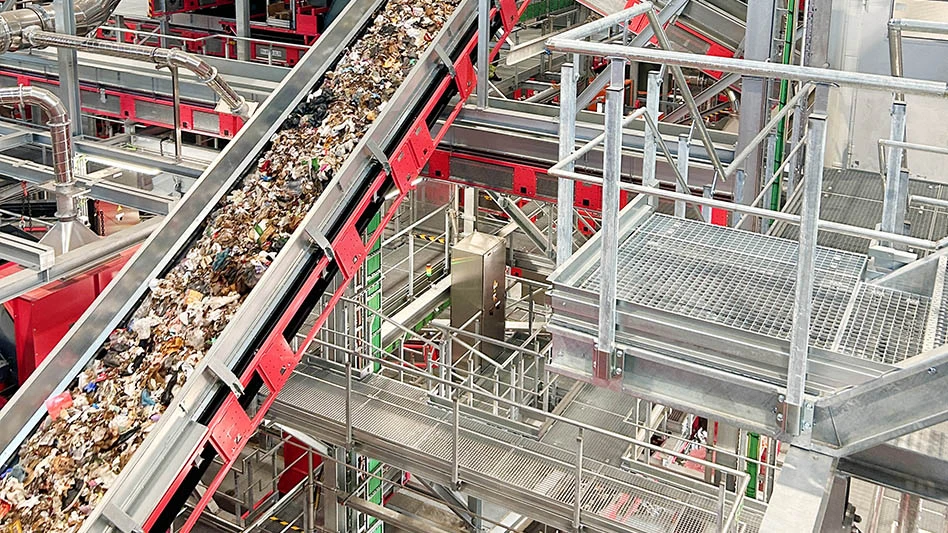
When municipalities make commitments to reach zero-waste-to-landfill goals and increase diversion rates, they must look at their waste stream and determine what materials can be diverted. Usually, municipalities target food waste and construction and demolition (C&D) debris.
“C&D represents a large fraction of the total MSW (municipal solid waste) in a region and provides a large chunk of potential recovery to improve overall recycling numbers,” Bradley Kelley, senior project engineer at Gershman, Brickner & Bratton (GBB), a McLean, Virginia-based consulting firm, says.
One project that GBB helped design, procure and start up was the C&D debris processing system at Corral Farm, a MSW facility in Fauquier County, Virginia.
“The C&D landfill was out of capacity and closing, so the county decided to maximize recycling and minimize the disposal of this waste stream,” Mike Dorsey, Fauquier County director of environmental services, says. There were also no other C&D recycling options available at the time in the region.
The system processes mixed C&D debris, such as dimensional lumber, scrap metal, vinyl siding, rigid plastics and drywall, and bales cardboard and plastic on-site to sell directly to buyers.
According to GBB, the site has increased recycling, maximized landfill life and generated more than 50 percent of the funds needed to provide the county’s solid waste services since the facility began operations.
Read the full story from the April issue of Waste Today here.
Get curated news on YOUR industry.
Enter your email to receive our newsletters.
Latest from Waste Today
- FZUK announces new commercial director
- Small-scale WTE partnerships
- Northwest Natural Renewables proposes Ohio landfill project
- US Senate backs reduced cuts to EPA
- Waste Connections announces Q2 results
- Returnity and Cosmoprof to address reusable bag waste
- SWANA releases report on aging WTE facilities
- New economic assessment reveals cost benefits of California’s SB 54






